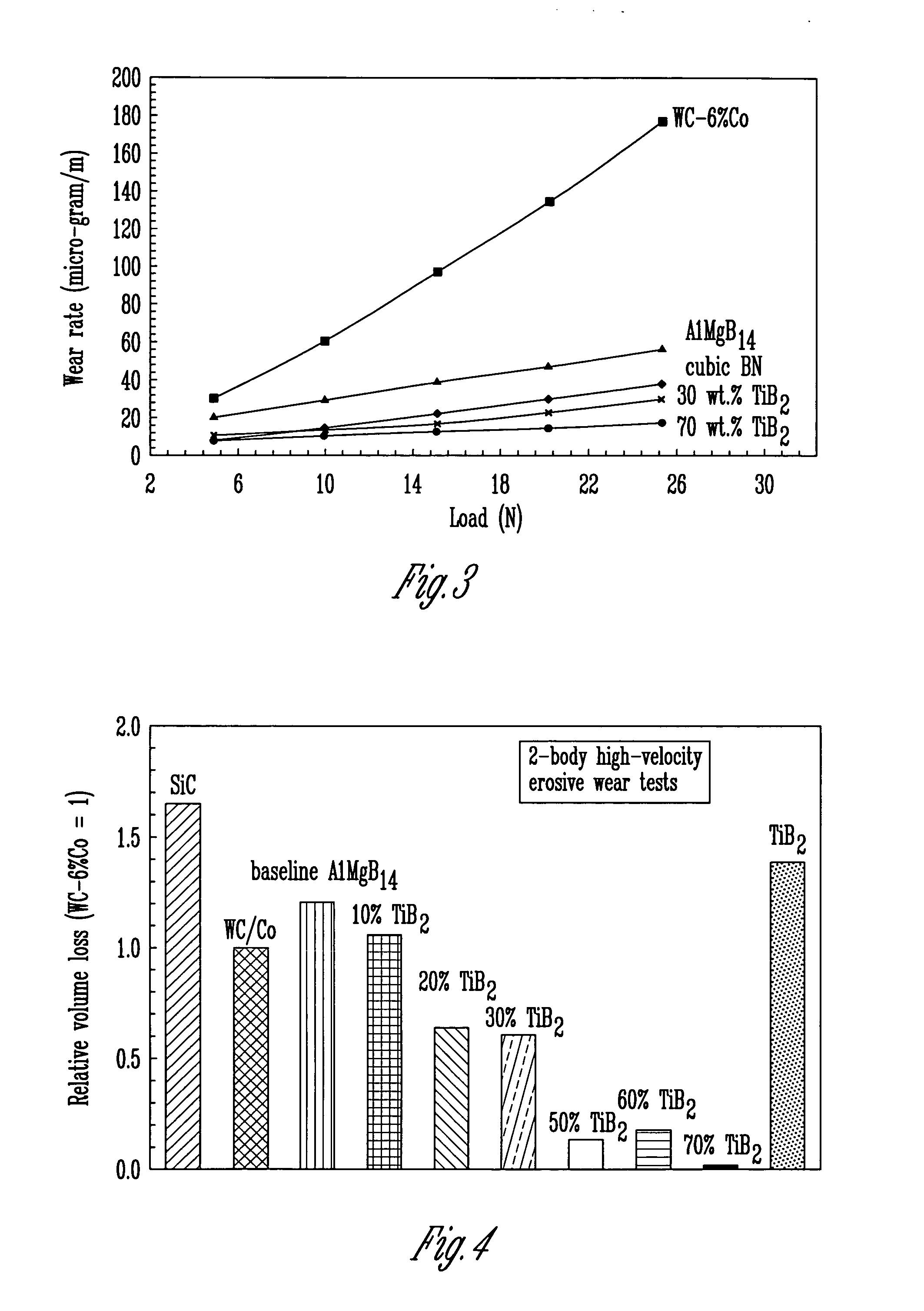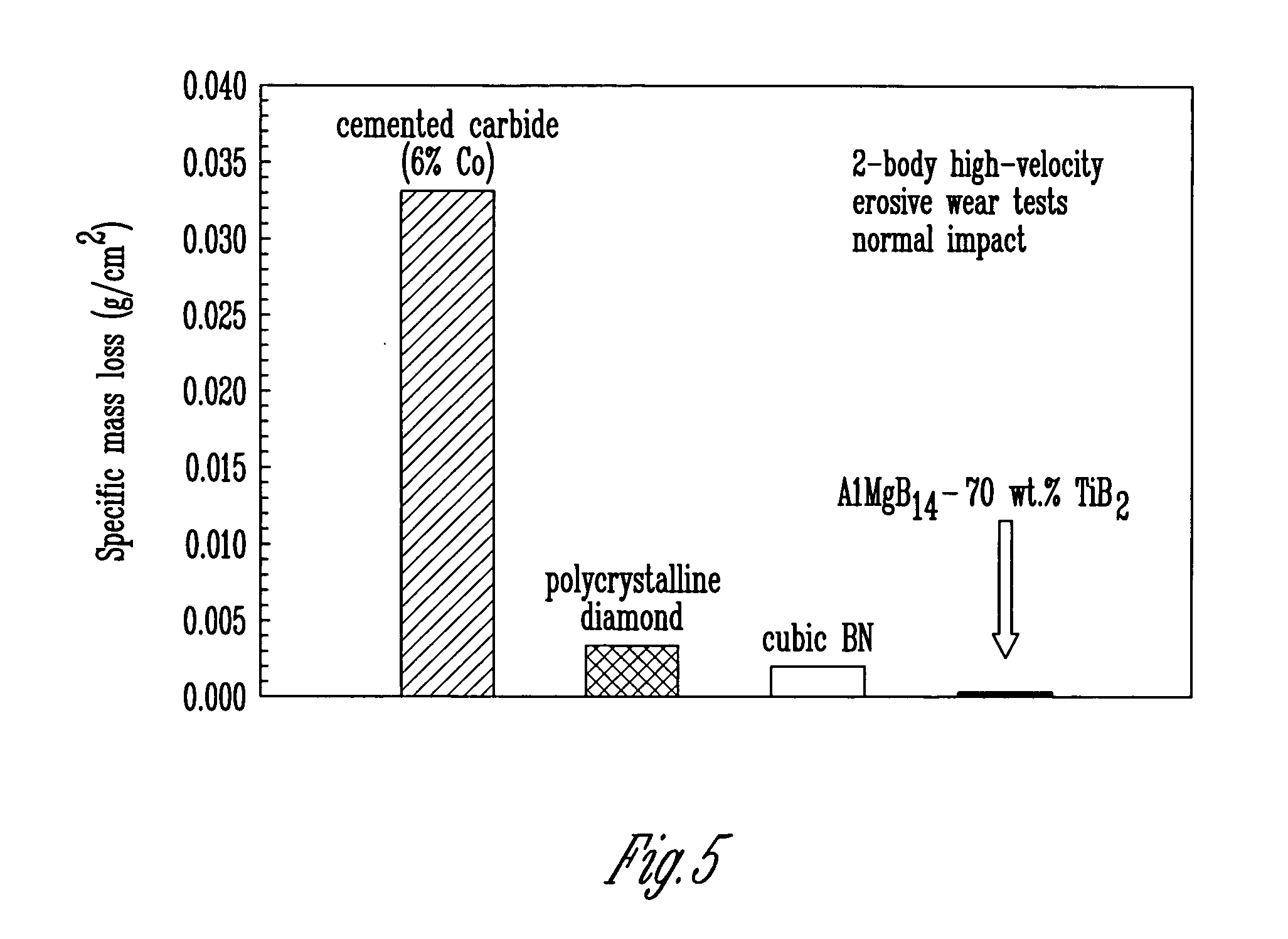Wear-resistant boride composites with high percentage of reinforcement phase
a technology of reinforcement phase and boride, which is applied in the field of ultra-hard boride based composites, can solve the problems of super-hard materials that cannot be machined, erosive and abrasive wear may both be viewed as surface damage, and the only feasible process for finishing these materials, and achieves high degree of grain interlocking, high degree of wear resistance, and low critical crack length
- Summary
- Abstract
- Description
- Claims
- Application Information
AI Technical Summary
Benefits of technology
Problems solved by technology
Method used
Image
Examples
Embodiment Construction
[0020] The invention consists of composites of the form M1M2B14 and M3B2 where M1 and M2 are comprised of metal-like elements from the group (Al, Mg, Li, Gd, Ag, Na, Tm, Er, Y, Ho, Sc, Cr) and M3 is comprised of an element or elements taken from the group (Ti, Zr, Hf) or combinations thereof, in a composition range outside that described in U.S. Pat. Nos. 6,099,605 and 6,432,855 B1. While the earlier patents refer to the mechanical hardness of AlMgB14+TiB2 in weight fractions up to 30% by weight (20.2 volume %) of TiB2, the current invention applies primarily to wear resistance, which is the ability of a material to withstand impingement by abrasive particulates. It has been unexpectedly discovered that the wear resistance of the ceramic compound M1M2B14 can be dramatically improved when the amount of M3B2 addition is increased to the range of 40% to 90% by weight (28.3 to 85 volume %). This discovery is contrary to conventional thinking. The amount of reinforcement phase added to c...
PUM
| Property | Measurement | Unit |
|---|---|---|
| grain size | aaaaa | aaaaa |
| porosity | aaaaa | aaaaa |
| flexural strength | aaaaa | aaaaa |
Abstract
Description
Claims
Application Information
 Login to View More
Login to View More - R&D
- Intellectual Property
- Life Sciences
- Materials
- Tech Scout
- Unparalleled Data Quality
- Higher Quality Content
- 60% Fewer Hallucinations
Browse by: Latest US Patents, China's latest patents, Technical Efficacy Thesaurus, Application Domain, Technology Topic, Popular Technical Reports.
© 2025 PatSnap. All rights reserved.Legal|Privacy policy|Modern Slavery Act Transparency Statement|Sitemap|About US| Contact US: help@patsnap.com



